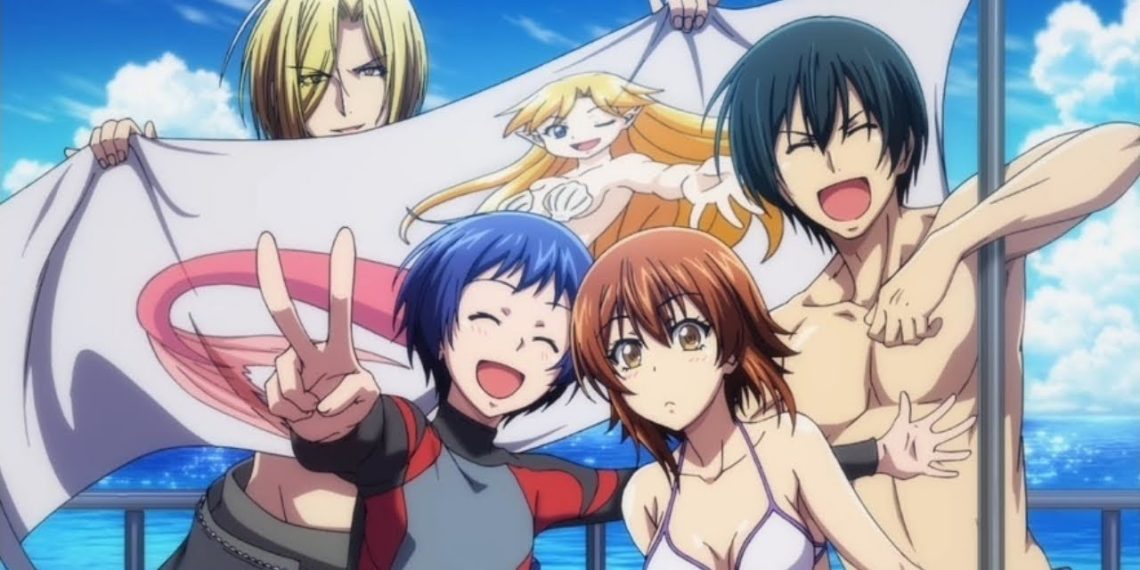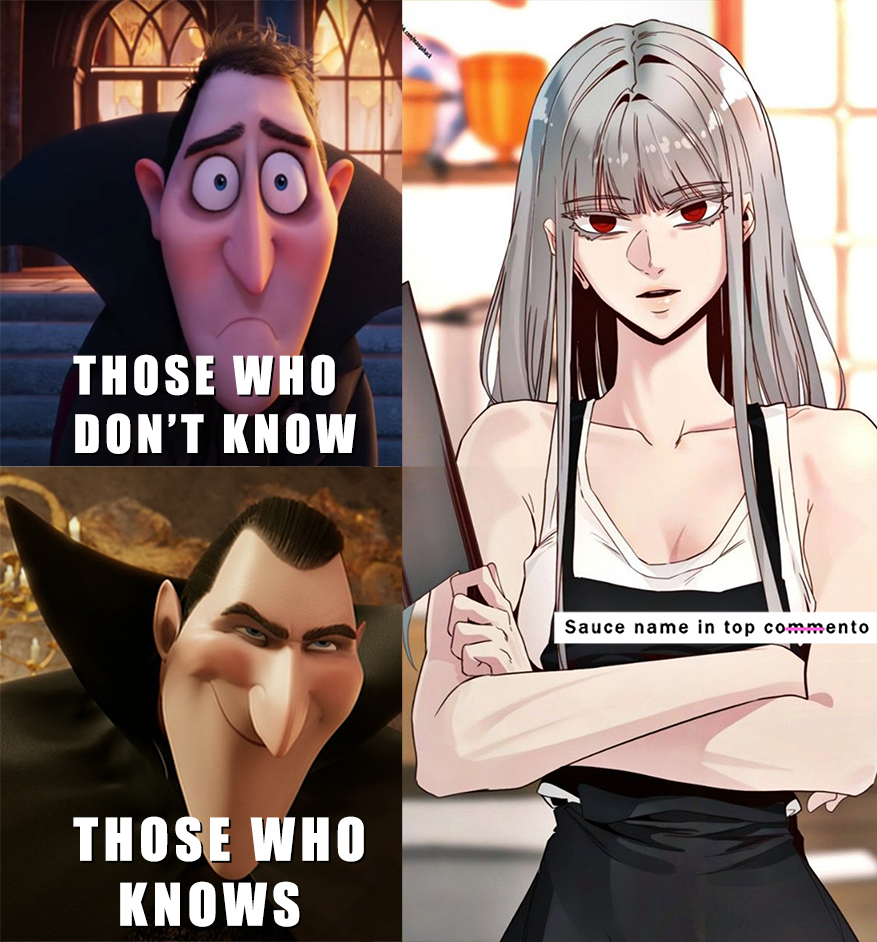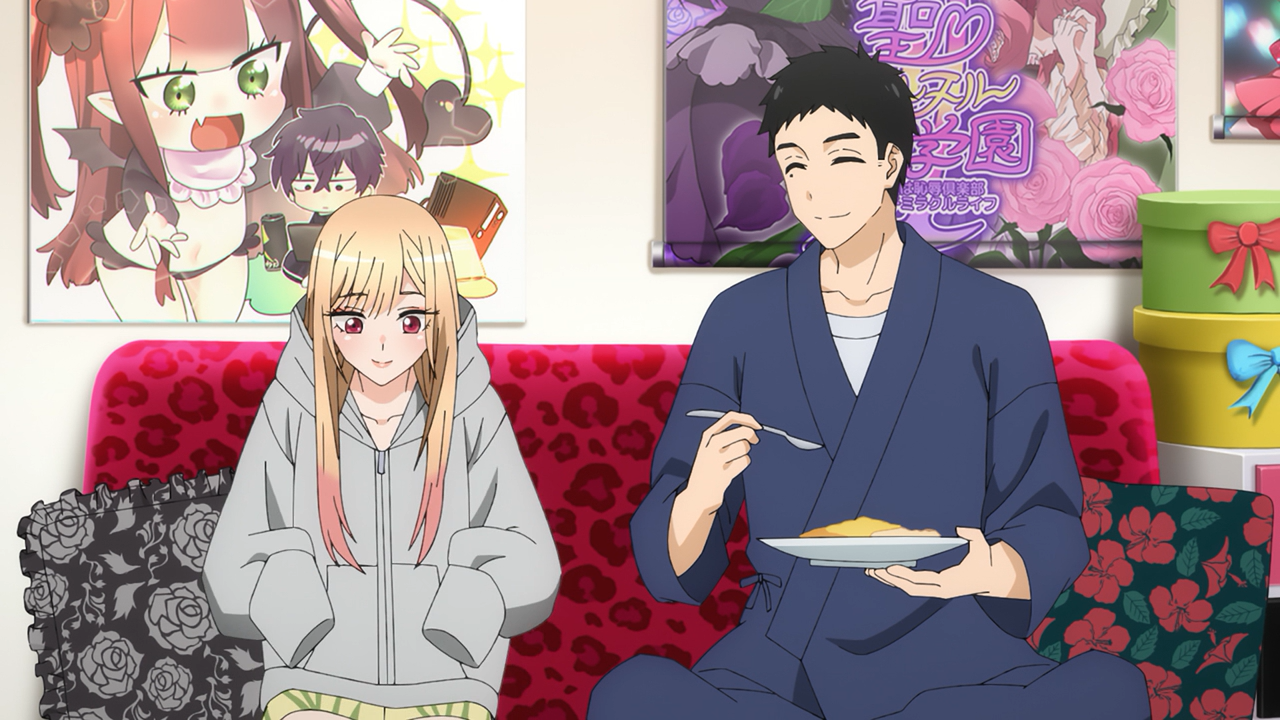College anime captures the essence of coming-of-age narratives, resonating deeply with viewers getting on their own life transitions. These series, set in university environments, illustrate the journey of young adults as they tackle new responsibilities and freedoms, offering a mix of humor, drama, and romance.
These animes are perfect for those looking for motivation linked to career aspirations, a touch of light-hearted comedy, cultural perspectives on higher education, or visually engaging stories driven by passion.
Highlighting a variety of genres that reflect the collegiate experience, here are 10 exceptional college anime recommendations that cater to every anime enthusiast’s tastes.
The transition to college often marks a significant milestone— a true coming-of-age moment. It’s a time when young adults step into a broader world and experience life from a new vantage point.
In this light, college anime serves as a particularly relatable form of media, allowing viewers to experience the highs and lows of college life, including the joy, friendships, loneliness, and the myriad of experiences that shape this pivotal time. Here, in no particular order, are 10 college anime that are likely to strike a chord with viewers finding this exciting stage of life.
1. Golden Time
Tada Banri, fresh out of high school, eagerly steps into a new phase of life as he heads to a prestigious law school in Tokyo. However, fate has a different plan for him as a sudden accident on his very first day leaves him grappling with retrograde amnesia, wiping clean his memories.

In the midst of this bewildering twist of fate, Banri finds solace and support in the friendships he forges on campus. Yet, as he looks through his new reality, fragments of his past begin to resurface, threatening the budding romance between him and Koko Kaga.
Returning with its signature style, J.C. Staff breathes life into Yuyuko Takemiya’s beloved light novel series, Golden Time. The anime beautifully captures the rollercoaster of emotions inherent in young love and the quest for self-identity. Set against the vibrant backdrop of a college town in Tokyo, viewers are treated to a visual feast that invites them to immerse themselves in the vicarious experience of college life.
Golden Time is a Japanese anime series based on the light novel of the same name written by Yuyuko Takemiya, with illustrations by Ēji Komatsu. The anime, which aired from October 2013 to March 2014, was produced by J.C.Staff and directed by Chiaki Kon. It consists of 24 episodes and is often praised for its unique take on romance, amnesia, and the complexities of relationships among young adults.
The story revolves around Banri Tada, a law student at a private university in Tokyo. He has lost all memories of his past due to a severe accident shortly after high school graduation.
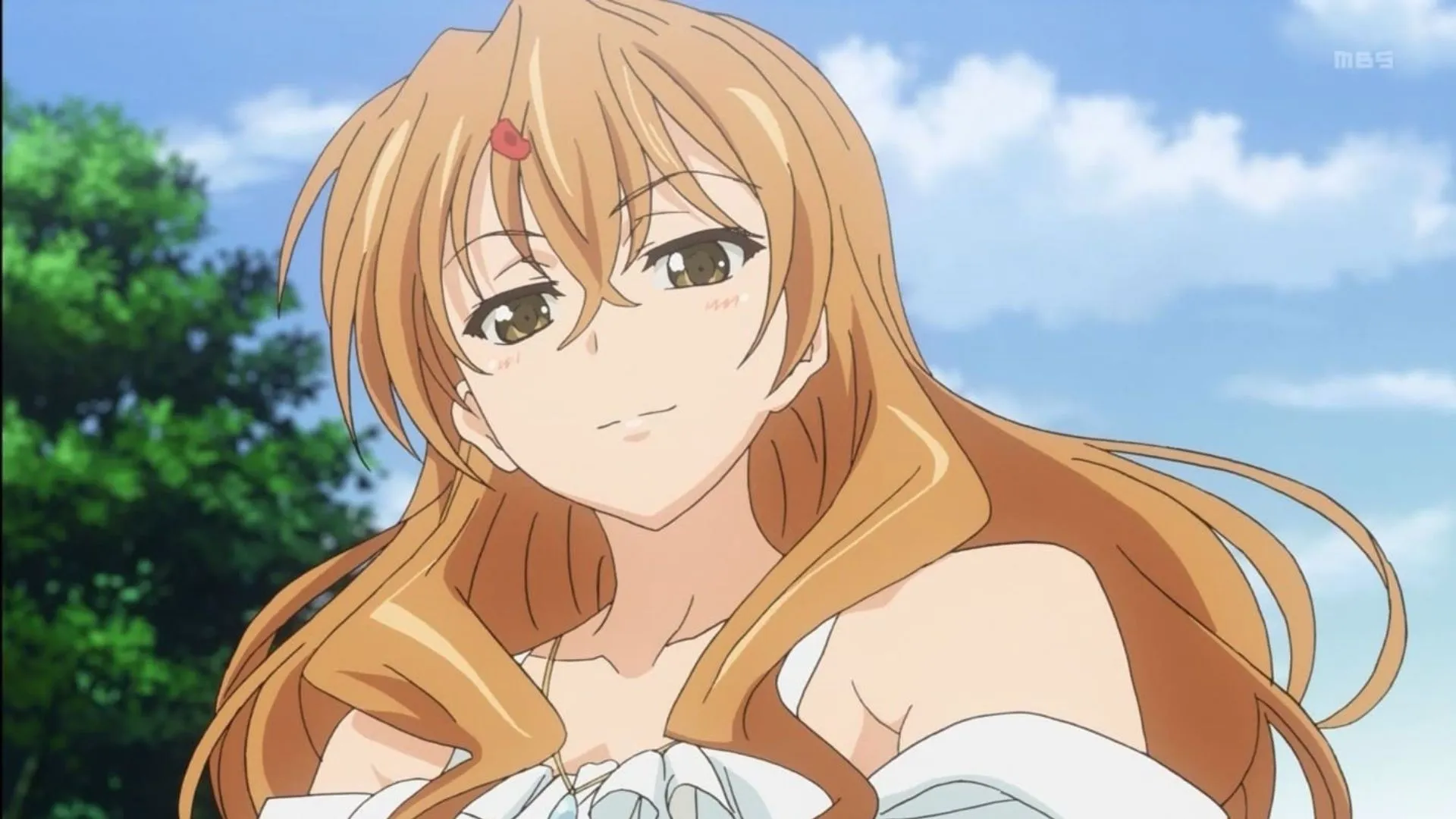
As he tries to find his new life in Tokyo, he befriends Mitsuo Yanagisawa, another student who has his own set of problems, primarily revolving around his childhood friend, Koko Kaga, who has followed him to university in hopes of continuing their presumed destiny together.
The plot thickens as Banri’s past and present collide, especially when he starts developing feelings for Koko. Throughout the series, Banri struggles with his emerging memories and the fear of losing his current identity and relationships.
Golden Time follows several themes, such as self-identity, love, friendship, and the impact of the past on the present. The dynamic between memories and current experiences is a central conflict for Banri, as it challenges his relationships and personal growth.
The series is notable for its mature approach to relationships compared to typical high school romance anime. It’s set in a college environment, which adds a layer of complexity and relatability for an older audience. Viewers appreciate the realistic portrayal of emotional conflicts and character development throughout the series.
In addition to the anime, Golden Time includes the original light novels and a manga adaptation, which further expands on the story and characters. The anime specifically has been appreciated for its faithful adaptation of the source material, with some notable changes to pacing and focus to fit the format.
Golden Time remains a beloved series for many anime fans due to its emotional depth and realistic portrayal of adult relationships. Whether you’re a fan of romance dramas or character-driven stories, Golden Time offers a compelling narrative that resonates with a wide audience.
2. Paradise Kiss
Yukari Hayasaka, a budding fashion design student, finds herself swept away into a whirlwind of style and ambition when she catches the eye of a group of fashion-obsessed art school students. Their world is one of vibrant runway shows and intricate romantic entanglements, where Yukari is both enchanted and challenged to confront her own future.
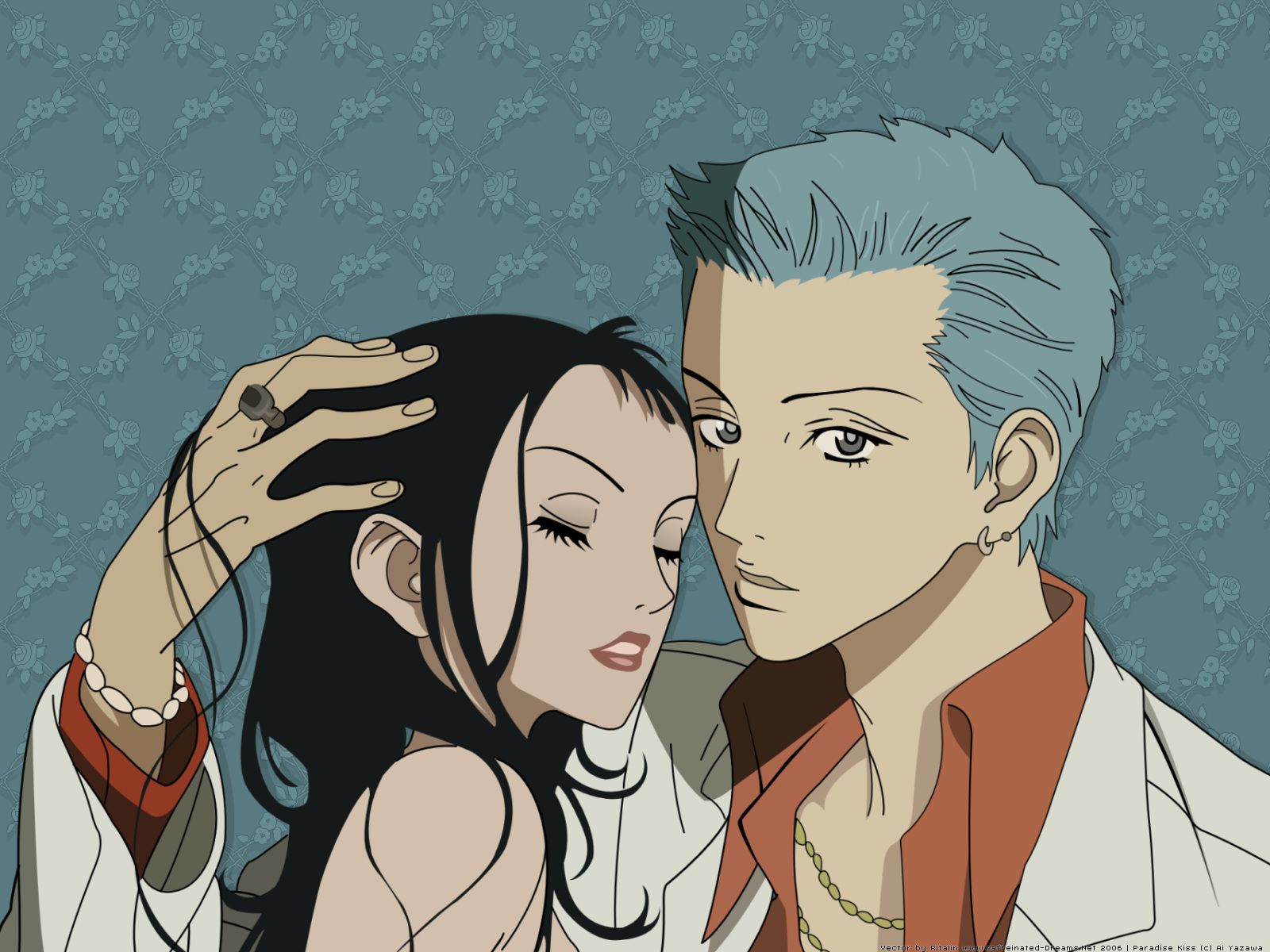
In the hands of Madhouse Studios and under the direction of Shinichi Omata, Ai Yazawa’s daring Josei manga, Paradise Kiss, comes to life with striking character designs and a visually stunning aesthetic. Through its bold portrayal of fashion and identity, the series dares to challenge conventional norms.
Paradise Kiss offers a refreshing take on collegiate passions and the pursuit of dreams, looking into melting-pot dynamics with a depth that transcends standard tropes. Even in today’s geography, its daring style and substance continue to feel remarkably progressive, inviting viewers to immerse themselves in a world where creativity and self-discovery reign supreme.
“Paradise Kiss” is a highly acclaimed Japanese manga series written and illustrated by Ai Yazawa. It was serialized in the fashion magazine “Zipper” from 1999 to 2003 and later collected into five volumes.
The series has been adapted into a 12-episode anime television series, produced by Aniplex and animated by Madhouse, which aired from October to December 2005. Additionally, Paradise Kiss has been adapted into a live-action film released in 2011, further expanding its influence and reach.
Paradise Kiss follows the life of Yukari Hayasaka, a high school student who is tired of her life of constant studying and pressure to succeed academically.

Her life takes a dramatic turn when she encounters a group of fashion design students who are part of a label known as Paradise Kiss. The group includes the charismatic leader George, the punk Arashi, the adorable Miwako, and the calm and collected Isabella.
The students are looking for a model for their fashion show, and they believe Yukari has the perfect look. Initially reluctant, Yukari is eventually swept into the glamorous and creative world of fashion. As she becomes more involved with Paradise Kiss, she begins to discover her own passions and gets on a journey of self-discovery and personal growth.
Paradise Kiss follows themes of identity, self-discovery, and the pursuit of one’s dreams against societal expectations. The series goes into the challenges of breaking away from traditional paths to forge one’s own way, highlighting the struggles and exhilaration of pursuing creative endeavors. Relationships, both romantic and platonic, play a crucial role in the series, influencing the characters’ growth and decisions.
The manga and anime have been praised for their mature storytelling, stylish art, and deep character development. The realistic portrayal of relationships and personal struggles resonates with a young adult audience, making it stand out from more typical youth-centric manga and anime. Paradise Kiss is also notable for its detailed and fashionable clothing designs, which reflect the author’s keen interest in fashion.
The anime adaptation remains true to the spirit of the manga, with some condensation and alterations typical of such adaptations. It captures the essence of the characters and their world through vibrant animation and a fitting soundtrack that complements the series’ mood and setting.
The live-action film adaptation introduced Paradise Kiss to a broader audience, bringing the characters and story to life in a new medium. While adaptations can vary in how faithfully they adhere to their source material, they offer different interpretations that can add depth and new perspectives to the original work.
Paradise Kiss remains a beloved series in manga and anime, celebrated for its unique blend of fashion, drama, and personal evolution. Its message about following one’s passion and breaking free from conventional expectations continues to inspire and resonate with audiences around the world.
3. Nodame Cantabile
Shinichi Chiaki, a prodigious piano student with aspirations of becoming a renowned orchestral conductor, seems to have paved the way for his path to musical greatness. However, his life outside of music is anything but disciplined, lacking the order and organization that define his musical pursuits.

Enter Megumi Noda, affectionately known as Nodame, a gifted yet delightfully eccentric pianist whose sloppy habits and free-spirited nature stand in stark contrast to Chiaki’s disciplined demeanor. When Nodame becomes Chiaki’s neighbor, she inadvertently disrupts his carefully curated world, turning it upside down in the most unexpected ways.
J.C. Staff masterfully brings Tomoko Ninomiya’s charming josei manga, Nodame Cantabile, to life, capturing the essence of the music college setting with acclaimed voice acting performances that resonate with viewers.
“Nodame Cantabile” is a beloved Japanese manga series written and illustrated by Tomoko Ninomiya. First serialized in the magazine Kiss from 2001 to 2010, the story combines elements of comedy, drama, and romance, all set against a backdrop of classical music.
Its success led to various adaptations, including an anime series, multiple live-action dramas, and even concert performances, demonstrating its broad appeal and impact on both manga and music enthusiasts.
The plot of Nodame Cantabile centers on two very different music students at a university in Tokyo. Shinichi Chiaki is an ambitious and talented pianist and violinist who aspires to become a conductor, following in the footsteps of his mentor, Sebastiano Viera.
However, his fear of flying limits his ability to travel to Europe to further his studies. Opposite him is Megumi Noda, or “Nodame,” an extremely skilled pianist who prefers playing by ear rather than following the musical score, which makes her somewhat eccentric and sloppy in both her music and personal life.
Their relationship begins somewhat tumultuously but grows into a complex bond fueled by their mutual passion for music. As they follow their personal aspirations, their love for music draws them together, with Nodame’s free-spirited nature complementing Chiaki’s strict discipline.
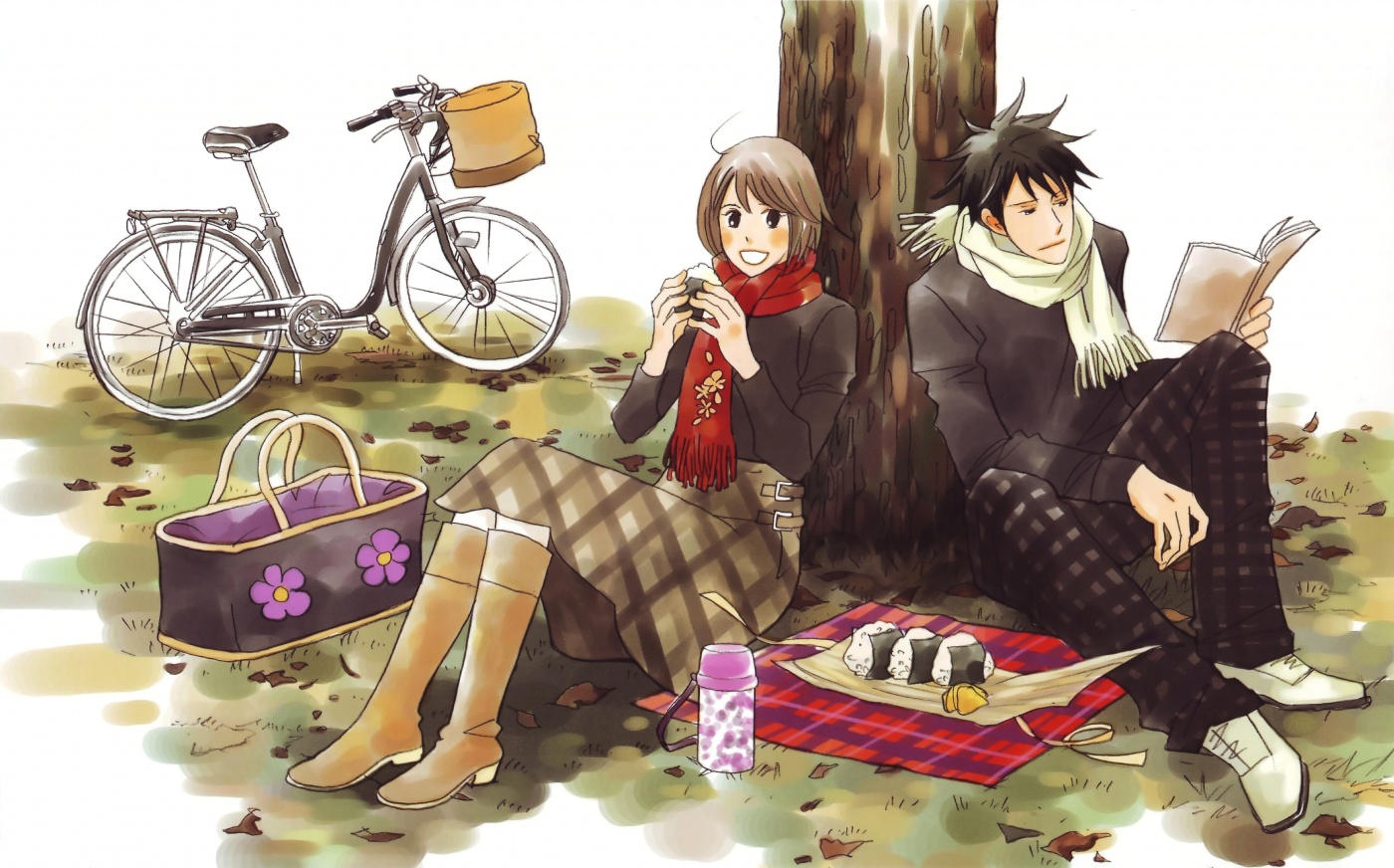
The story follows their growth as musicians and individuals, with a heavy emphasis on their development and the various other students and musicians they encounter along their journey.
Nodame Cantabile follows several themes, most notably the pursuit of artistic excellence and the sacrifices it entails. It also addresses the balance between discipline and spontaneity in both life and art, illustrating how different approaches to music and living can lead to personal growth and mutual understanding. The series is rich with humor, romance, and personal drama, making it engaging on multiple levels.
The manga was extremely popular, with over 37 million copies sold, and received several awards, including the Kodansha Manga Award for shojo in 2004. The anime adaptation, which aired in three seasons (2007, 2008, and 2010), is praised for its faithful depiction of the musical scores and performances, often using real recordings by professional musicians.
The live-action adaptations, including a Japanese drama series and a Korean drama, helped to popularize classical music among a broader audience and brought the story to life with actual musical performances by the actors, further blurring the lines between classical music performance and mainstream entertainment.
Each adaptation of Nodame Cantabile brought something unique to the table, particularly the live-action versions, which included actual musical performances, adding a layer of authenticity and appeal.
The series also inspired real-life concert performances, where orchestras would play the classical pieces featured in the anime and dramas, sometimes accompanied by screenings or appearances by the actors.
Nodame Cantabile remains a significant cultural phenomenon in Japan and across the globe, celebrated for its delightful blend of music, romance, and comedy. It continues to inspire interest in classical music and holds a special place in the hearts of its many fans.
4. Honey and Clover
Chica Umino’s poignant manga finds its animated counterpart in this acclaimed college anime, centered around the lives of five students attending an art college in Tokyo. As they look at the tumultuous waters of young adulthood, their bonds strengthen through shared creative endeavors and the inevitable trials that accompany chasing dreams while facing life’s unexpected challenges.

J.C. Staff paints a vivid picture of campus life, skillfully capturing the essence of each season that serves as both a backdrop and a metaphor for the characters’ evolving journeys. Against this backdrop, the bittersweet coming-of-age story unfolds, blending moments of joy and heartache with the quiet beauty of everyday life.
“Honey and Clover” is a renowned Japanese manga series created by Chica Umino. Serialized from 2000 to 2006, it spans ten volumes and follows themes of youth, friendship, and unrequited love against the backdrop of art and academia. The manga’s success led to an anime adaptation, as well as live-action films and a TV drama, all of which contributed to its widespread popularity and critical acclaim.
The story revolves around a group of art students attending an art college in Tokyo and follows their intertwining lives and relationships. The main characters include Yuuta Takemoto, a kind and thoughtful student who struggles with finding his passion and purpose in life; Takumi Mayama, Yuuta’s close friend who is responsible and mature but harbors complicated feelings for his boss at the art gallery where he works;
Shinobu Morita, a mysterious and carefree artist known for his eccentric behavior and frequent disappearances; Hagumi Hanamoto (Hagu), a talented and petite first-year student who becomes the center of attention and affection for several characters; and Ayumi Yamada, an aspiring ceramic artist who harbors unrequited feelings for Mayama.
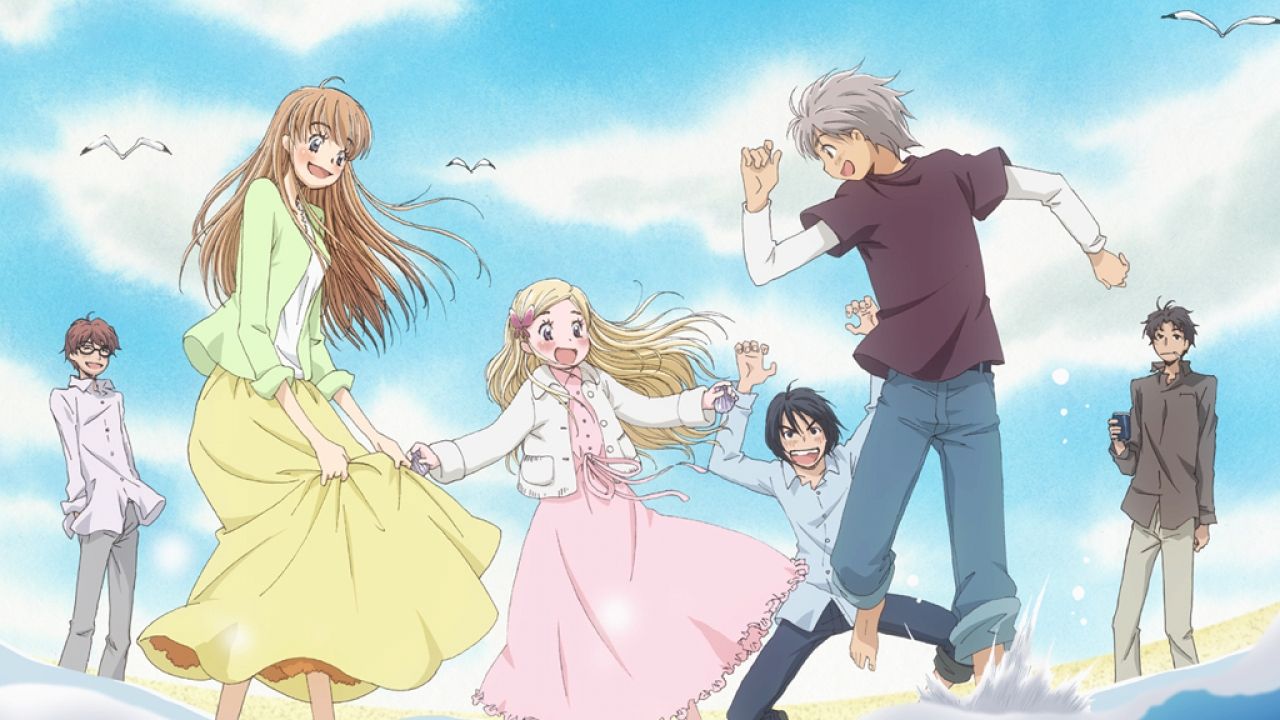
The relationships among these characters are complex and deeply emotional, often portraying the struggles of young adults as they follow love, friendship, and the pursuit of their dreams. The series is known for its realistic portrayal of human emotions and its ability to evoke both laughter and tears from its audience.
“Honey and Clover” goes into various themes, including the pursuit of artistic fulfillment, the challenges of adulthood and responsibility, unrequited love, and the bonds of friendship. It follows the uncertainty and confusion that often accompany young adulthood as characters grapple with questions of identity, purpose, and the meaning of success.
The manga was adapted into a critically acclaimed anime series that ran for two seasons from April 2005 to September 2006. The anime faithfully captures the emotional depth of the manga and is praised for its artistic style, character development, and poignant storytelling.
In addition to the anime, “Honey and Clover” was adapted into two live-action films released in 2006, along with a TV drama series in 2008. These adaptations further popularized the series and introduced it to a wider audience beyond manga and anime enthusiasts.
Both the manga and anime of “Honey and Clover” have been highly regarded by critics and fans alike. The series is praised for its nuanced characterizations, emotional depth, and relatable themes. It resonates with audiences who appreciate its sincerity and the authenticity of its portrayal of young adulthood.
Overall, “Honey and Clover” stands as a timeless work that captures the essence of youth, friendship, and the pursuit of dreams. Its enduring popularity and impact continue to make it a beloved classic in the manga and anime world, offering a touching and introspective journey into the lives of its endearing characters.
5. Genshiken
Step into the world of college freshman Kanji Sasahara as he finds himself drawn into the eccentric universe of his university’s Genshiken club. Comprised of hardcore otaku enthusiasts, the club serves as a haven where members can freely indulge in their passion for anime and manga without fear of judgment.

Through Kanji’s journey, the series humorously follows the intricacies of anime and manga fandom, shining a light on the quirks and idiosyncrasies of its diverse cast of characters. Played for laughs while simultaneously offering a thoughtful commentary on tropes and stereotypes within the otaku community, Genshiken provides an affectionate and honest portrayal of niche hobbies.
For savvy viewers, the series is peppered with references that add an extra layer of enjoyment, inviting audiences to look deeper into the place of otaku culture. At its core, Genshiken celebrates the sense of community and camaraderie that can be found among individuals bonded by a shared passion, offering a lighthearted yet insightful of college life and the pursuit of one’s interests.
Genshiken is a manga and anime series that provides an in-depth exploration of otaku culture. The title is an abbreviation of “Gendai Shikaku Bunka Kenkyuukai,” which translates to “The Society for the Study of Modern Visual Culture.”
The story centers around a group of college students who are members of the Genshiken club at Shiiou University. This club serves as a gathering place for individuals with a shared passion for anime, manga, video games, and other aspects of otaku culture.
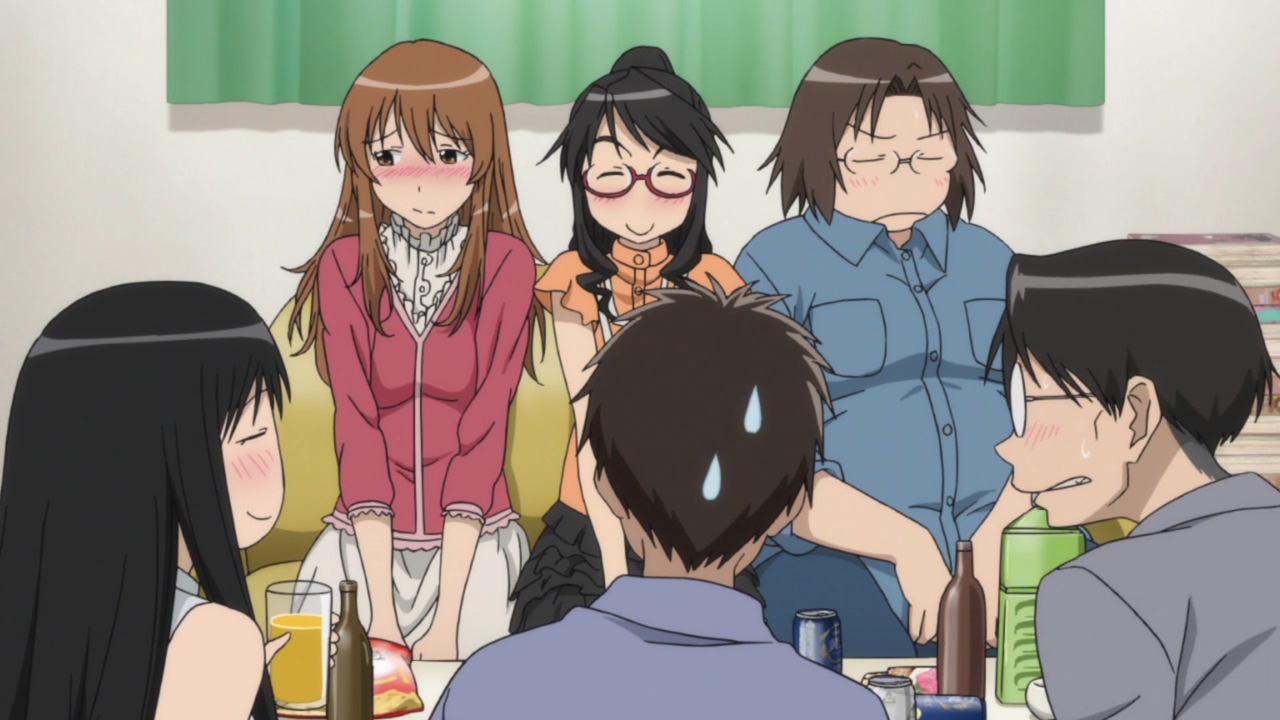
The series portrays a realistic and affectionate view of otaku life, highlighting the diverse interests and activities within the club. Characters like Sasahara Kanji, the protagonist, start as curious newcomers and evolve into active participants in otaku activities. Other members, such as Madarame Harunobu, Ohno Kanako, Kasukabe Saki, and Kugayama Mitsunori, each contribute unique perspectives and personalities to the group.
*Genshiken goes into various facets of modern visual culture, including manga creation, anime fandom, doujinshi (fan-made comics), and cosplay. It also follows the challenges faced by otaku individuals, such as balancing their passion with academic or career pursuits and finding relationships with non-otaku friends or partners.
Through its characters and narrative, *Genshiken* examines broader social and cultural themes. It touches on issues of identity, belonging, and self-acceptance within the context of the otaku subculture. The interactions between otaku and non-otaku characters provide insights into societal norms and prejudices.
Humor and slice-of-life elements are integral to the series, complementing its thematic depth. *Genshiken* blends amusing situations, witty dialogue, and comedic misunderstandings with introspective storytelling, creating an engaging and relatable experience for readers.
Genshiken stands out as a nuanced exploration of friendship, personal growth, and the joys and challenges of pursuing niche interests. Its realistic character portrayals and insightful commentary on otaku culture have resonated with audiences seeking a deeper understanding of fandom and human relationships.
6. Grand Blue
Join Iori Kitahara as he is on a new chapter of his life in a seaside town, where he attends college and resides with his carefree uncle. Little does he know that his journey will lead him straight into the whirlwind world of the Oceanography Diving Club fraternity house, where upperclassmen indulge in a culture of drinking and outrageous antics.
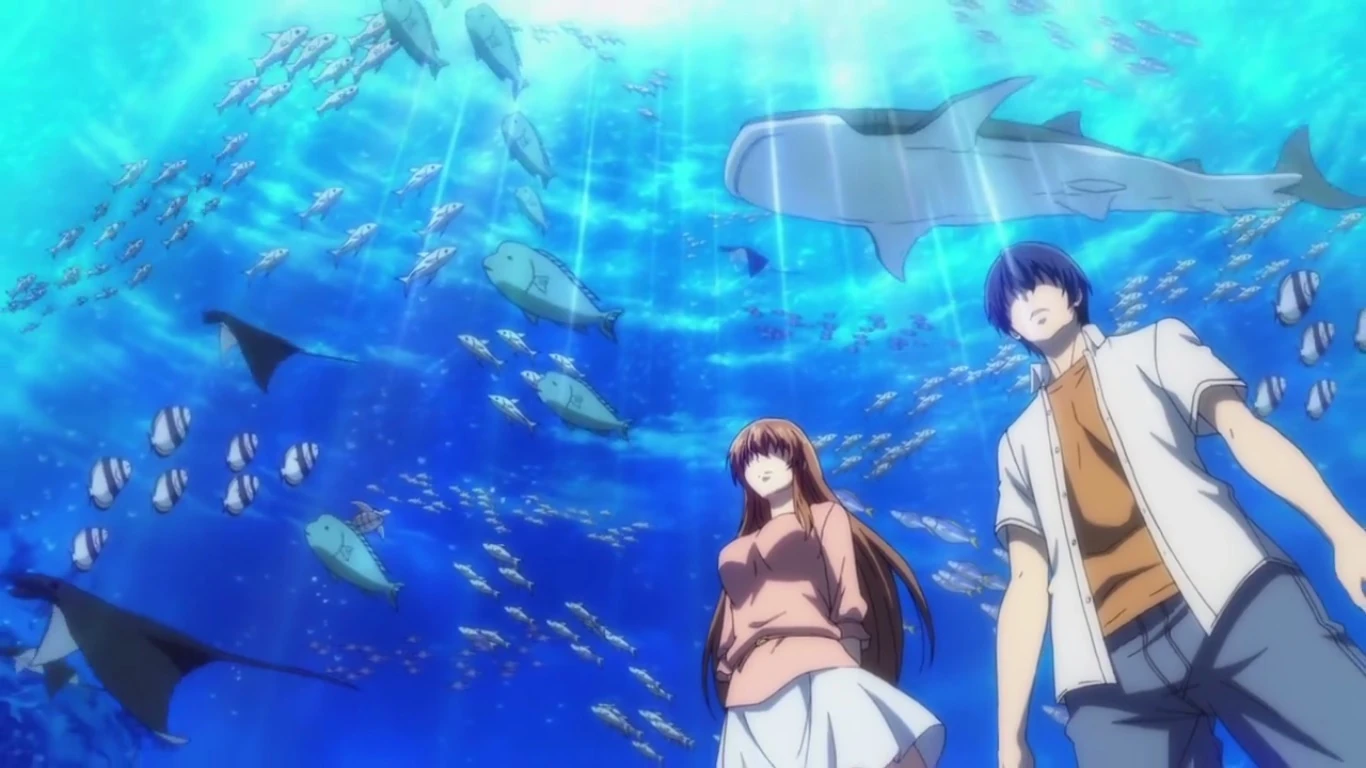
With unapologetic humor and a healthy dose of crassness, Zero-G Studios delivers a college comedy that leaves no stone unturned. Grand Blue captures the wild and chaotic times of college life, blending raucous humor with moments of genuine camaraderie and friendship that develop within the tight-knit fraternity.
Behind closed doors, amidst the laughter and debauchery, the series also follows more thoughtful themes, portraying the bonds that form among its characters as they look at the ups and downs of young adulthood.
For viewers craving a dose of unfiltered college chaos beyond the confines of textbooks and lectures, Grand Blue delivers big laughs and approved entertainment. Strap in for a hilarious ride that promises to leave you in stitches from start to finish.
Grand Blue is a hilarious and popular manga and anime series written by Kenji Inoue and illustrated by Kimitake Yoshioka. The story follows Iori Kitahara, a college student who moves to the coastal town of Izu to attend university. There, he joins his uncle’s diving shop, Grand Blue, expecting a relaxing and carefree college life by the seaside.
However, Iori quickly discovers that life in Izu is anything but ordinary, especially after he becomes involved with the eccentric members of the local diving club. Led by the wild and uninhibited Kohei Imamura, the diving club is known for its wild parties, heavy drinking, and misadventures both on land and underwater.
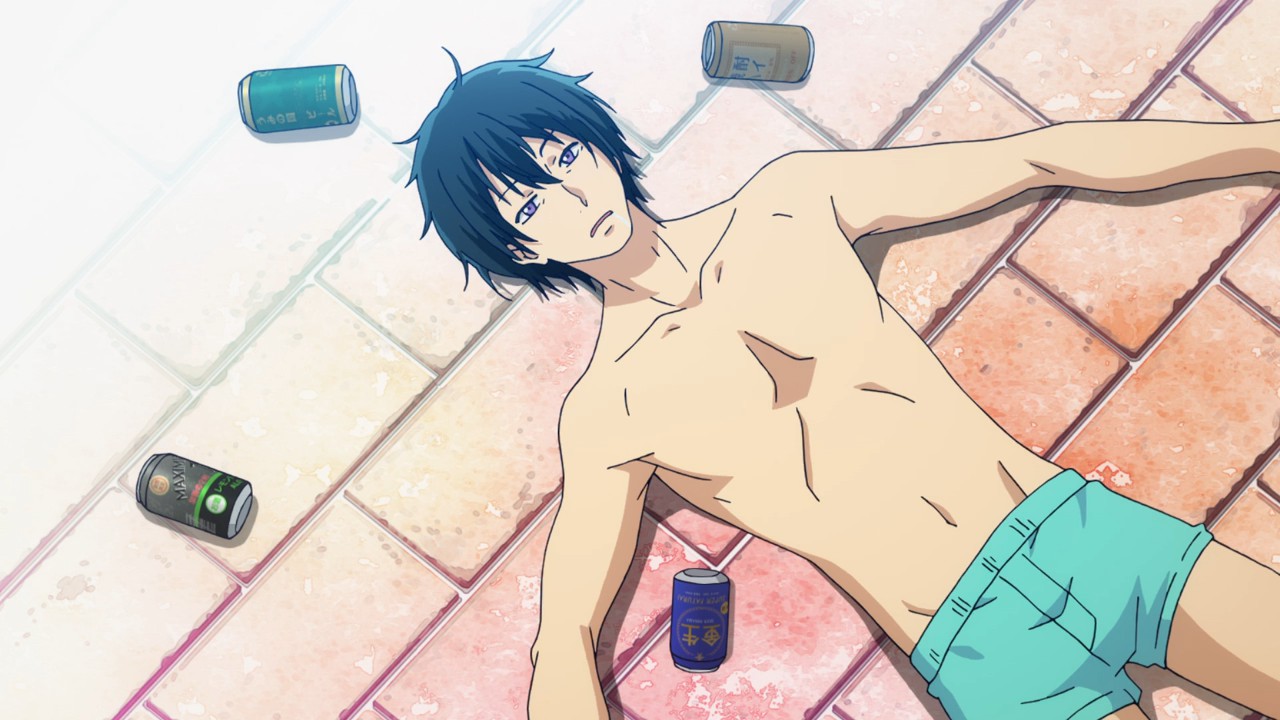
Grand Blue is celebrated for its comedic and over-the-top antics, with a strong focus on friendship and camaraderie among the club members. The series is known for its outrageous humor, often involving excessive drinking, comedic misunderstandings, and absurd situations. Despite the chaos, Grand Blue also features beautiful underwater scenes and highlights the joys of scuba diving.
The characters in Grand Blue are colorful and memorable, each with their own quirks and comedic traits. Iori follows his new life surrounded by outrageous friends, including the enigmatic Chisa Kotegawa, who becomes a pivotal figure in the diving club’s misadventures.
Visually, Grand Blue features an expressive and exaggerated art style, perfectly complementing the comedic tone of the series. The character designs are distinctive, and the series effectively captures the laid-back atmosphere of coastal living.
While Grand Blue is primarily a comedy series, it also follows themes of self-discovery, youthful exuberance, and the importance of forging meaningful connections with others. The series strikes a balance between uproarious humor and genuine moments of friendship and personal growth.
The anime adaptation of Grand Blue received a positive reception for its faithful adaptation of the manga’s humor and lively character interactions. Fans of comedy and slice-of-life anime will appreciate the zany escapades and hilarious dynamics of the diving club in Grand Blue.
Overall, Grand Blue offers a refreshing and uproarious take on college life and friendship, delivering laughs and heartwarming moments amidst the chaos. If you enjoy comedic series with memorable characters and absurd situations, Grand Blue is definitely worth diving into!
7.Rent-A-Girlfriend
When college sophomore Kinoshita Kazuya finds himself heartbroken after a sudden breakup, he turns to an unconventional solution: renting a girlfriend. Enter Chizuru Mizuhara, a professional rental girlfriend hired to fulfill Kazuya’s emotional needs. However, as their fake relationship deepens and genuine feelings begin to emerge, looking at the complexities of keeping up appearances becomes increasingly challenging.

Tao Animation Studio skillfully adapts Reiji Miyajima’s beloved manga, looking into the insecurities and empathetic connections that develop between the two leads. Against the backdrop of college life, Rent-A-Girlfriend follows themes of love, friendship, and self-discovery, offering a unique twist on the romantic comedy genre.
As the relationship between Kazuya and Chizuru evolves, viewers are treated to a sweet romantic progression that unfolds in unexpected ways. The anime’s light-hearted twists, reminiscent of beloved series like Nagi Asu: A Lull in the Sea and Golden Time, add depth to its narrative, making it a standout addition to the genre.
Rent-A-Girlfriend (Kanojo, Okarishimasu) is a romantic comedy manga and anime series written and illustrated by Reiji Miyajima. The story follows Kazuya Kinoshita, a college student who, after a recent breakup, decides to use a mobile app called Diamond to rent a girlfriend for a date. Through the app, Kazuya meets Chizuru Mizuhara, a beautiful and seemingly perfect girl who works as a rental girlfriend.
Initially skeptical of the concept of renting a girlfriend, Kazuya is surprised to discover that Chizuru is kind, understanding, and skilled at her job. However, after an awkward encounter with his grandmother, Kazuya feels compelled to continue renting Chizuru’s services to maintain appearances. As Kazuya’s feelings for Chizuru grow, he becomes entangled in a web of romantic complications and misunderstandings.

Rent-A-Girlfriend follows themes of love, loneliness, and self-discovery against the backdrop of modern dating culture. The series cleverly mixes humor with genuine emotional moments, providing insight into the complexities of relationships and human connection.
The characters in Rent-A-Girlfriend are well-developed and relatable, each grappling with their own insecurities and desires. Kazuya’s inner turmoil and Chizuru’s facade of perfection create engaging dynamics that evolve throughout the series.
Visually, Rent-A-Girlfriend features appealing character designs and expressive animation. The romantic and comedic elements are enhanced by the vibrant visuals and comedic timing.
The anime adaptation of Rent-A-Girlfriend garnered attention for its entertaining portrayal of the manga’s storyline and characters. The voice acting and soundtrack contribute to the series’ total charm, capturing the emotions and humor of the original work.
Rent-A-Girlfriend offers a lighthearted and enjoyable romantic comedy experience, blending humor, drama, and romance in a modern setting. Whether you’re a fan of romantic anime or looking for a fun and relatable series, Rent-A-Girlfriend provides an entertaining exploration of love and relationships in the digital age.
8. Run with the Wind
When Kakeru Kurahara, a former elite runner, crosses paths with Haiji Kiyose, a determined and enterprising individual, their lives take an unexpected turn. Drawn together by circumstance, Kakeru finds himself living in an affordable apartment complex with Haiji and a group of fellow tenants. The catch? They must join the newly established college running team, coached by Haiji, as a condition of their accommodation.
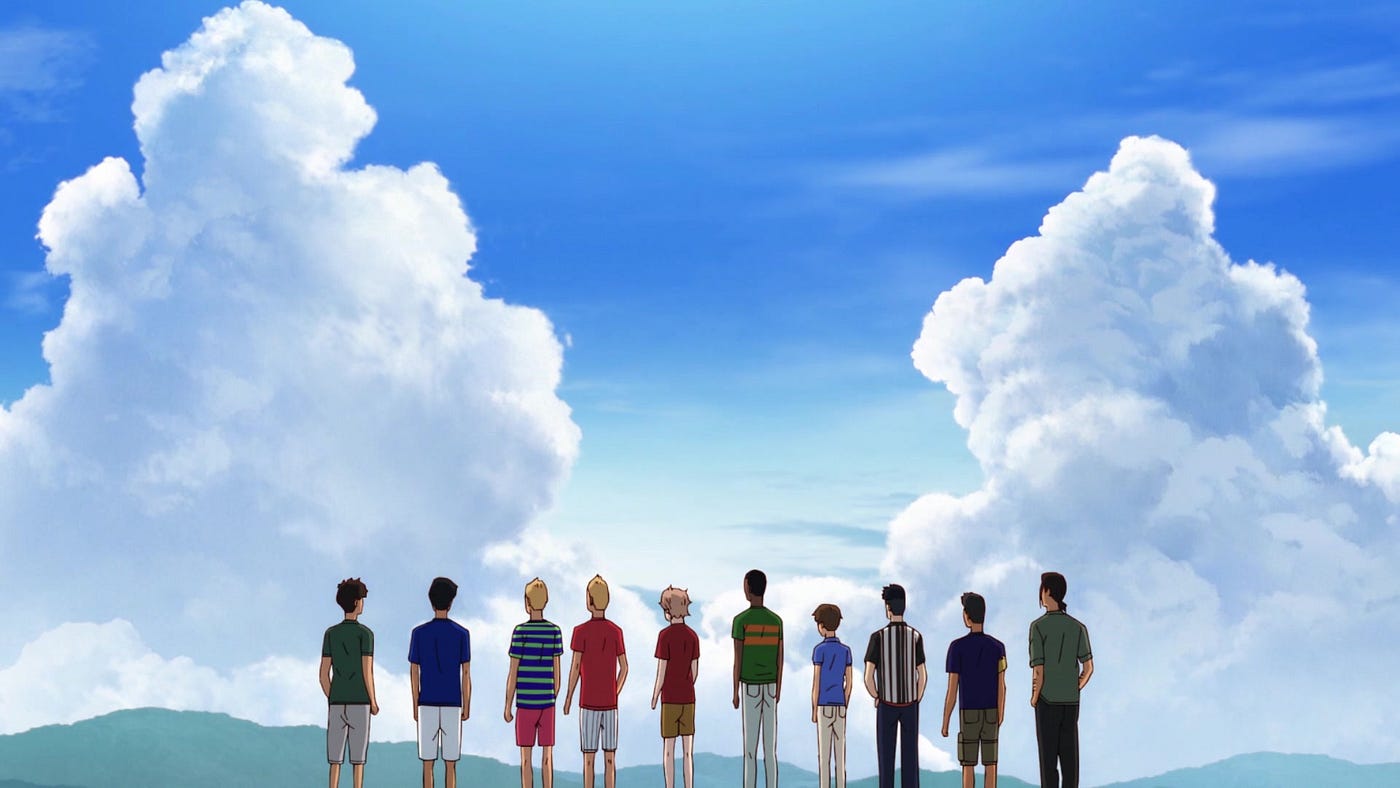
In this sports college drama anime, titled Run with the Wind, viewers are taken on a journey that goes beyond the track. The series beautifully captures the collaborative spirit and unwavering commitment required for relay runners to push their emotional and physical limits. Through tense races and grueling training sessions, the characters learn to overcome their individual challenges and work together towards a common goal.
What sets Run with the Wind apart is its focus on character study, shedding light on the complex motivations and personal struggles that enrich collegiate camaraderie.
Run with the Wind (Kaze ga Tsuyoku Fuiteiru) is a compelling sports anime based on the novel by Shion Miura. The series follows a group of college students who come together to form a track and field team and strive to compete in the Hakone Ekiden, a prestigious and challenging relay marathon race held in Japan.
The story centers around Haiji Kiyose, a talented and enthusiastic runner who recruits nine other students living in his dorm to join the track team. Despite their initial reluctance and lack of experience, Haiji’s passion and determination inspire the group to train seriously for the Hakone Ekiden.
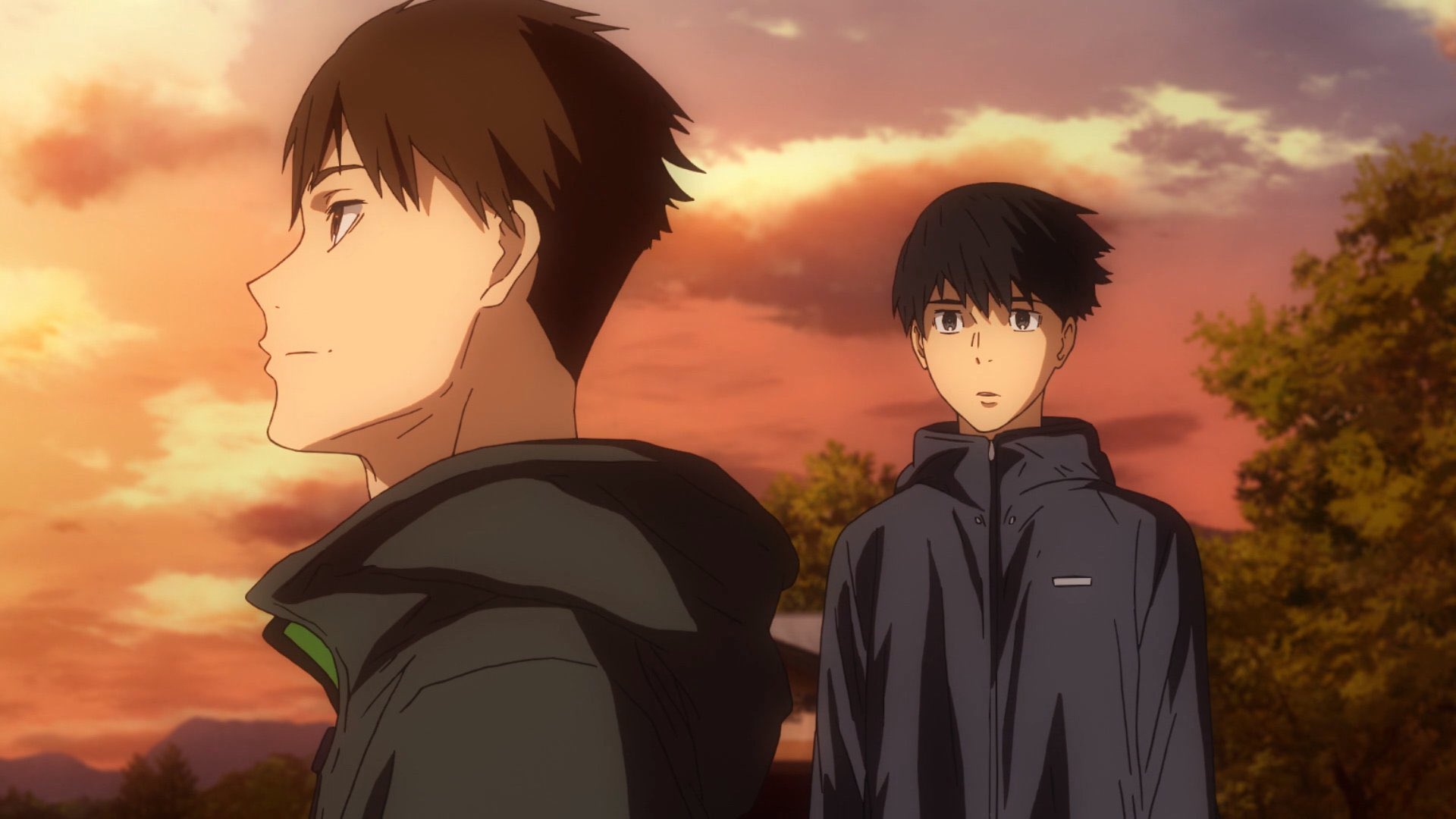
Each member of the team has their own motivations and struggles, ranging from personal issues to academic challenges. As they train together, the group forms strong bonds of friendship and camaraderie, supporting each other through setbacks and obstacles on their journey to become competitive runners.
Run with the Wind beautifully captures the spirit of perseverance, teamwork, and personal growth through the lens of competitive sports. The anime portrays the physical and emotional challenges of long-distance running, as well as the joys of achieving individual and collective goals.
Visually, Run with the Wind features detailed and realistic animation during the running sequences, immersing viewers in the intensity and excitement of the sport. The character development is a highlight of the series, with each team member undergoing significant growth and transformation as they train and prepare for the Hakone Ekiden.
The anime adaptation of Run with the Wind received praise for its faithful adaptation of the source material, strong character dynamics, and emotional storytelling. The series resonated with audiences for its inspirational themes and relatable characters.
Run with the Wind is a nice sports anime that goes beyond the typical sports genre, emphasizing the importance of teamwork, determination, and the pursuit of personal excellence. Whether you’re a fan of sports anime or looking for a heartfelt and motivating story, Run with the Wind delivers a memorable and uplifting experience that celebrates the triumph of the human spirit.
9. The Tatami Galaxy
On a surreal journey with an unnamed third-year Kyoto University student who finds himself trapped in a cycle of parallel worlds. In his quest for the ideal rose-colored campus life, he repeatedly resets, joining different clubs and befriending alternate personalities, only to find himself back where he started.
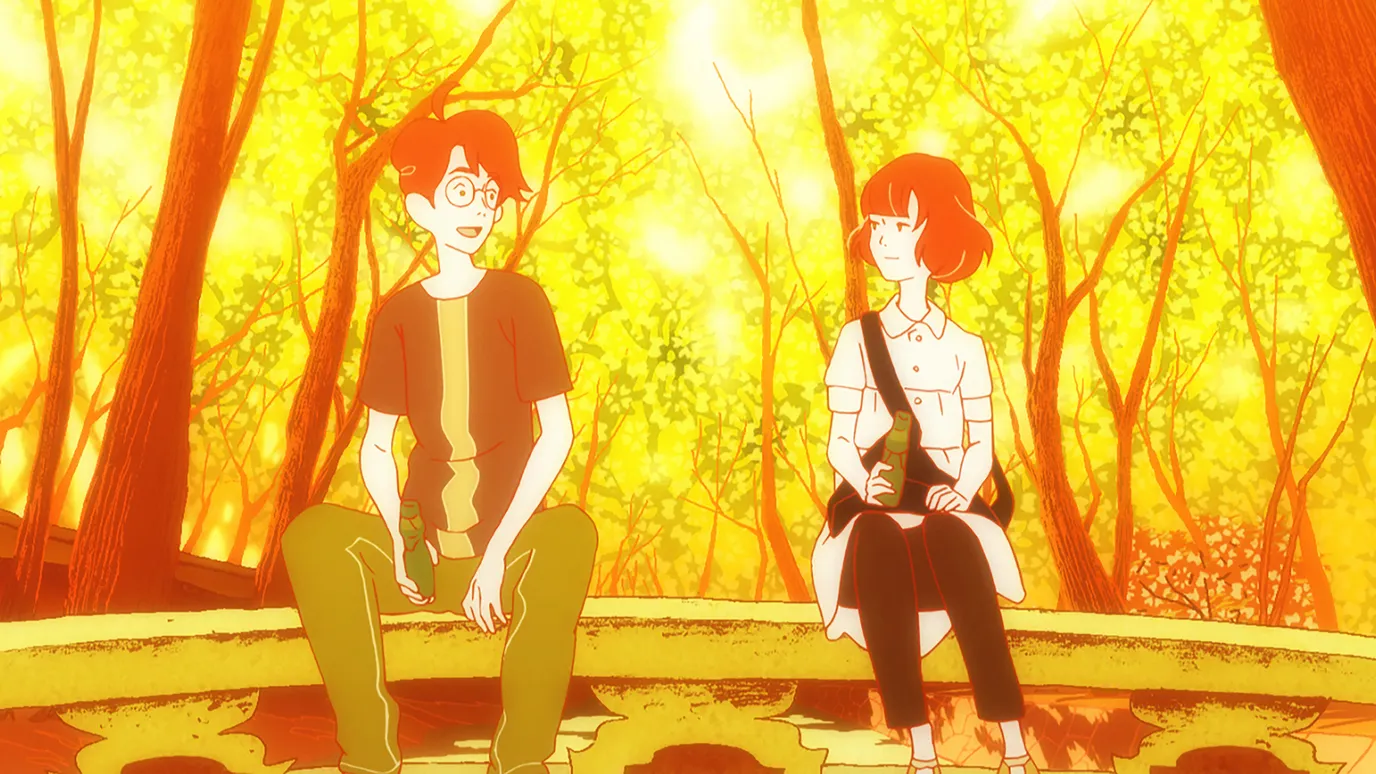
Madhouse Studios takes viewers on this dizzying odyssey through The Tatami Galaxy, a surrealist dark comedy that offers an introspective look at the protagonist’s quest for fulfillment and purpose. Animated with a unique visual style, the series looks deep into themes of regret, choice, and the passage of time.
Through metaphor, visual interest, and cultural nuances, The Tatami Galaxy presents poignant lessons on seizing the opportunities of youth and making the most of every moment. As the protagonist grapples with the consequences of his decisions, viewers are invited to reflect on their own lives and the paths they choose to follow.
The Tatami Galaxy (or Yojouhan Shinwa Taikei in Japanese) is a unique and thought-provoking anime series based on a novel by Tomihiko Morimi. It’s renowned for its unconventional storytelling, distinctive visual style, and philosophical themes.
The series follows an unnamed protagonist, referred to as Watashi (meaning I or Me in Japanese), who is a university student experiencing a time loop. Each episode presents a different iteration of Watashi’s college life, with slight variations in his choices and interactions, all influenced by his desire for a rose-colored campus life. However, each attempt ends in disappointment, leading him to regret the path not taken.
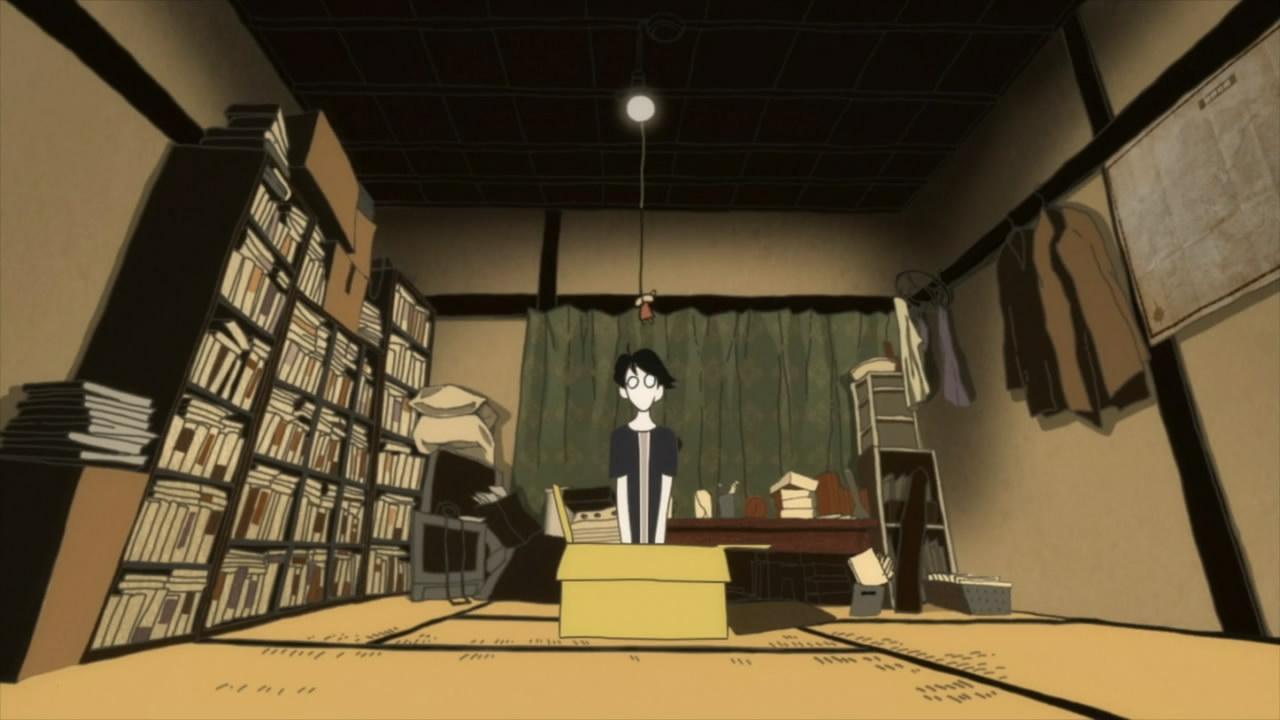
Watashi follows this surreal journey alongside Ozu, a mischievous and enigmatic fellow student who often serves as both friend and antagonist. Through encounters with eccentric characters like Higuchi, Hanuki, and the fortune-teller Jogasaki, Watashi grapples with existential questions about identity, friendship, and the pursuit of happiness.
The recurring motif of the tatami galaxy, symbolizing the confined space of Watashi’s limited perspective, underscores the series’ exploration of personal growth and the search for authentic connections. As Watashi’s experiences accumulate across different timelines, he begins to recognize the richness and complexity of life beyond his narrow preconceptions.
The animation style of The Tatami Galaxy is visually striking, characterized by fast-paced dialogue, dynamic visuals, and inventive art direction. The use of rapid-fire monologues and quick cuts creates a sense of urgency and introspection, mirroring Watashi’s frenetic inner world.
At its core, The Tatami Galaxy is a profound meditation on the nature of choice, regret, and the pursuit of happiness. It challenges viewers to reflect on their own life trajectories and consider the significance of embracing uncertainty and embracing genuine connections.
This anime stands out for its innovative storytelling, rich character development, and thematic depth. Whether you’re drawn to its philosophical themes or intrigued by its unconventional narrative structure, The Tatami Galaxy offers a nice and intellectually stimulating viewing experience that lingers long after the credits roll.
10. Science Fell in Love, So I Tried to Prove It
Ayame Himuro and Shinya Yukimura, two brilliant minds immersed in the place of science, find themselves paired together for a lab research project at Saitama University. Himuro, a rationalist, and Yukimura, with his mathematical inclination, share not only a passion for science but also a deep intellectual and emotional connection despite their contrasting personalities.
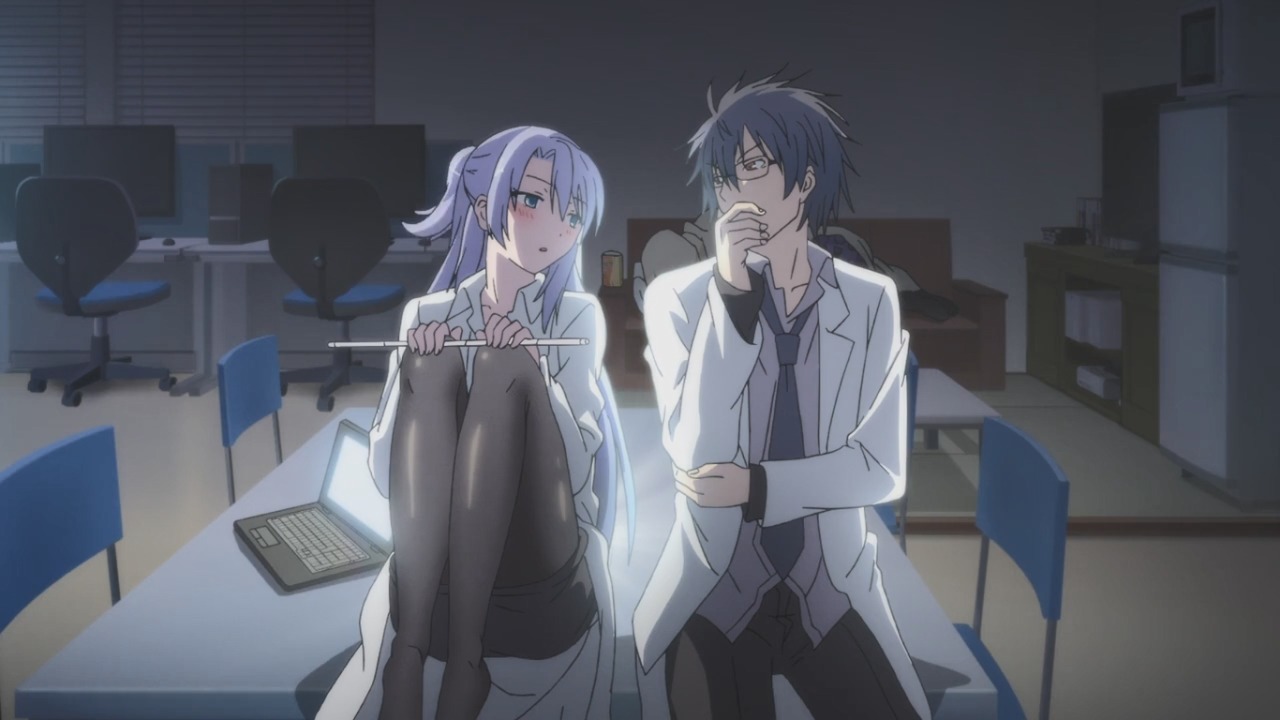
The anime Science Fell in Love, So I Tried to Prove It brilliantly follows the dynamics between these two characters, weaving together humor, romance, and razor-sharp wit against the backdrop of STEM field academics. As they look at their scientific endeavors, their shared worldview and logic-based approach to life lead to both hilariously absurd and heart-fluttering moments.
The series captures the essence of college life with its blend of academic rigor and youthfulness. Himuro and Yukimura’s interactions are not only intellectually stimulating but also emotionally resonant as they look at the complexities of their burgeoning feelings for each other.
Science Fell in Love, So I Tried to Prove It (Rikei ga Koi ni Ochita no de Shoumei Shitemita) is a romantic comedy anime series based on the manga by Alifred Yamamoto. The story revolves around two scientists, Ayame Himuro and Shinya Yukimura, who work together at a university research laboratory.
Ayame is a brilliant physicist focused on studying love scientifically, while Shinya is a talented mathematician specializing in statistics. Despite their intellectual pursuits, both characters harbor romantic feelings for each other but are unable to admit it due to their scientific mindsets.
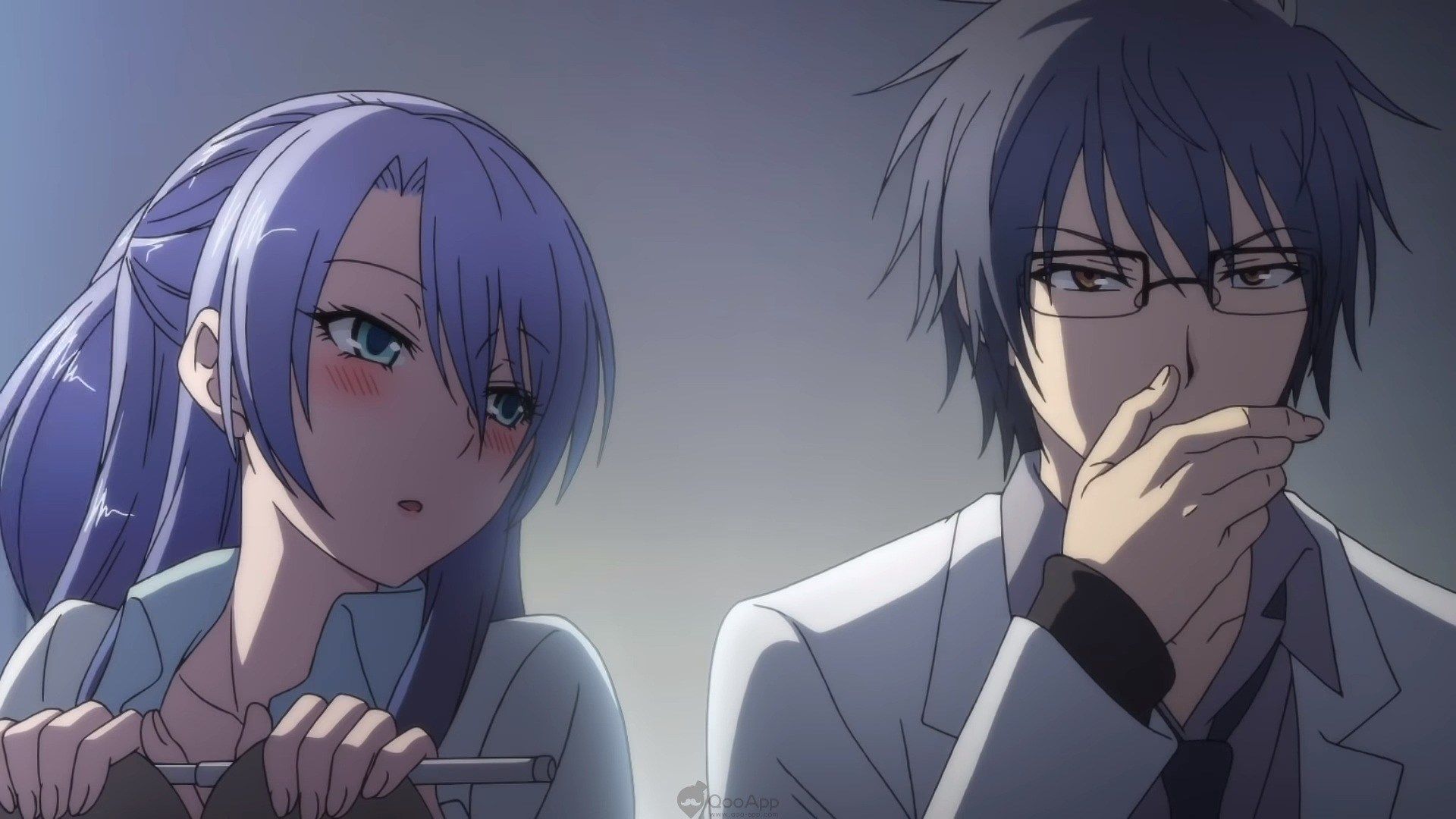
The series humorously follows the intersection of science and romance as Ayame and Shinya go on various experiments and calculations to quantify and prove their love for each other. They apply scientific principles and methodologies to analyze their feelings, leading to comedic misunderstandings and awkward situations.
Science Fell in Love, So I Tried to Prove It features a charming ensemble of characters, including fellow researchers and friends who contribute to the comedic dynamics. Each episode presents a new scientific approach to understanding love, such as using mathematical equations, brain scans, or controlled experiments.
Visually, the anime adopts a colorful and lighthearted art style, enhancing the comedic tone of the series. The character designs are expressive, capturing the humorous expressions and reactions of the protagonists during their romantic investigations.
The anime adaptation of Science Fell in Love, So I Tried to Prove It, received positive reception for its witty humor, engaging characters, and playful exploration of scientific concepts within a romantic context. The voice acting and interactions between Ayame and Shinya bring their quirky personalities to life, making the series entertaining and enjoyable to watch.
Science Fell in Love, So I Tried to Prove It offers a refreshing and comedic take on the themes of love and science, blending intellectual curiosity with heartfelt emotions. Whether you’re a fan of romantic comedies or intrigued by the intersection of science and relationships, this series provides a delightful and amusing viewing experience.
11. My Dress-Up Darling
My Dress-Up Darling (or Sono Bisque Doll wa Koi wo Suru) is a charming anime series that beautifully combines elements of cosplay, doll-making, and heartfelt romance.
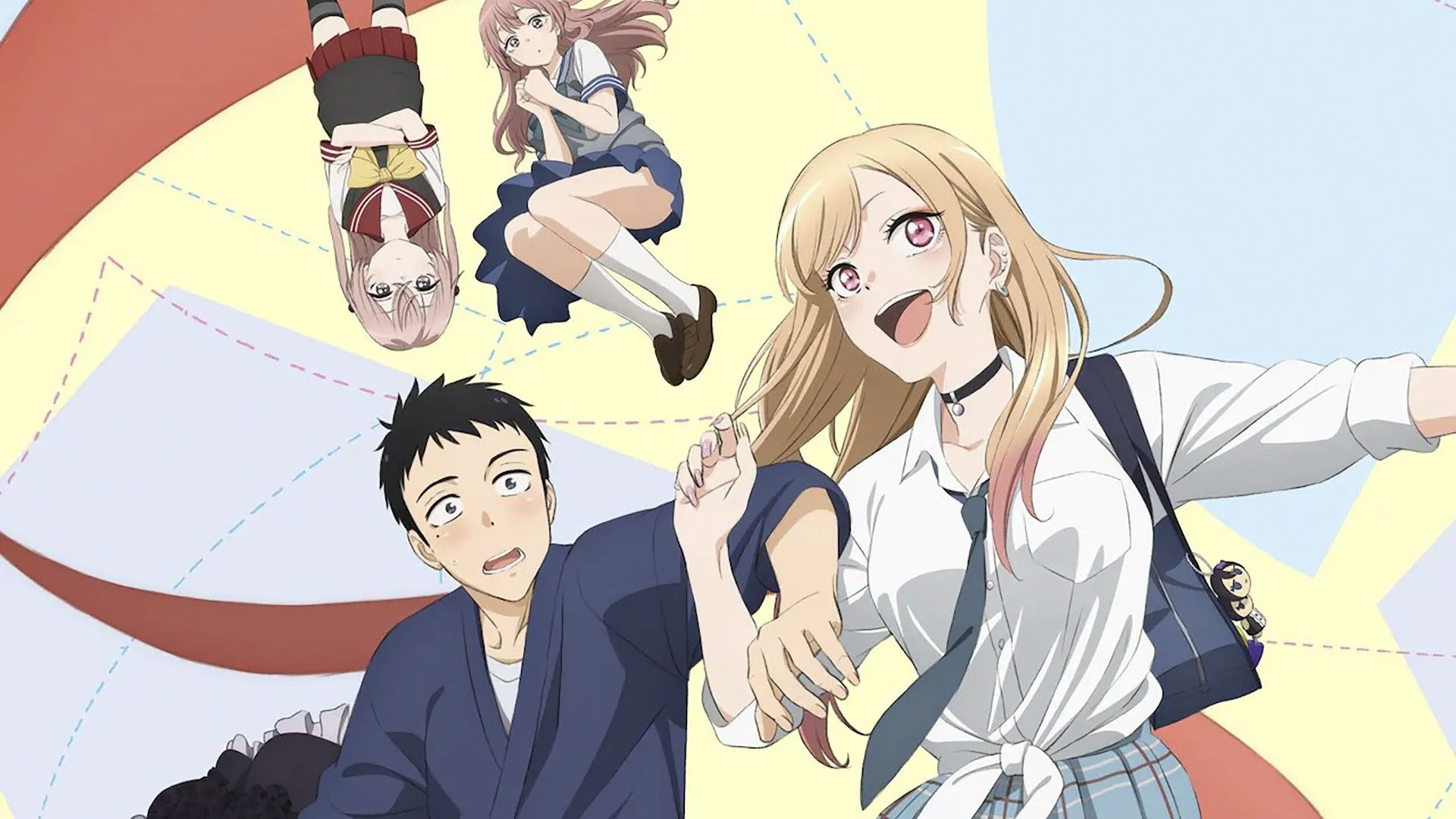
The story revolves around Marin Kitagawa, a high school student with a hidden passion for creating intricate cosplay costumes, and Wakana Gojou, a talented doll-maker who becomes Marin’s creative partner and friend.
The series follows Marin and Wakana’s evolving relationship as they collaborate on cosplay projects and doll outfits. Marin, initially reserved about sharing her hobby with others, finds herself drawn to Wakana’s genuine enthusiasm for doll-making.
As they work together, both characters undergo personal growth, gaining confidence in their artistic abilities and forming a deep bond based on mutual respect and support.
One of the standout aspects of My Dress-Up Darling is its portrayal of the cosplay and doll-making communities. The anime showcases the dedication and creativity of cosplayers and doll enthusiasts, highlighting the joy and fulfillment that come from expressing oneself through art. The detailed artwork depicting Marin’s cosplay designs and Wakana’s doll creations adds visual richness to the narrative.
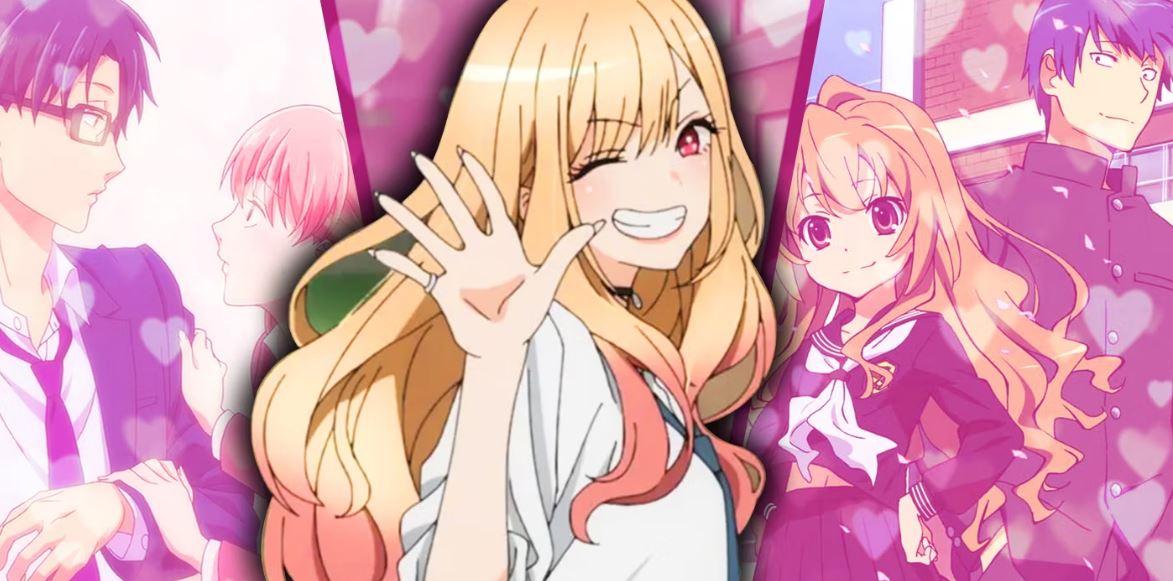
The characters in My Dress-Up Darling are endearing and relatable, each with their own dreams and insecurities. Marin’s passion for cosplay is portrayed with sincerity, while Wakana’s quiet determination to pursue his craft resonates with audiences. The supporting cast, including Sajuna Inui and Shinju Inui, adds depth to the story, further enriching the exploration of friendship and personal development.
As a romantic comedy, My Dress-Up Darling strikes a good balance between humor and emotional depth. The interactions between Marin and Wakana are heartwarming, filled with genuine moments of connection and shared enthusiasm for their respective hobbies. The series also follows themes of self-discovery, acceptance, and the importance of pursuing one’s passions.
While the anime primarily focuses on Marin and Wakana’s relationship, it also introduces a cast of supporting characters who add humor and depth to the story. From Marin’s cosplay friends to Wakana’s classmates, each character brings something unique to the table and contributes to the charm of the series.
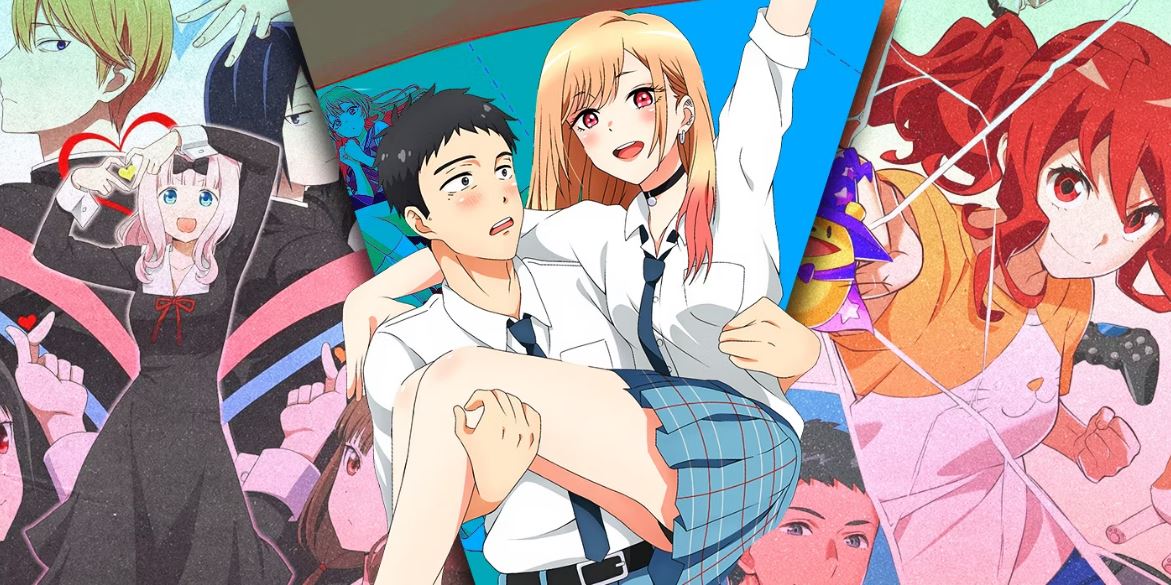
In terms of pacing, “Dress Up Darling” strikes a good balance between episodic fun and character-driven storytelling. The progression of Marin and Wakana’s partnership feels natural and satisfying, with each episode offering a new perspective on cosplay and its impact on their lives.
My Dress-Up Darling is a delightful anime that celebrates creativity, friendship, and the transformative power of artistic expression. Whether you’re a fan of cosplay, doll-making, or heartfelt romance, this series offers a touching and enjoyable viewing experience with beautifully crafted visuals and engaging characters.
It’s a gem that shines brightly in slice-of-life anime, leaving a lasting impression on viewers who appreciate genuine storytelling and heartwarming relationships.
Memes of the Day
Onna Kyoushi no Fubunritsu
Hero Killer
Pixiv 113412615
Chotto Bijin de Mune ga Dekakute Eroi dake no Baka Nee
Stalking Girl Chapter 2
FSDSS-433
SAUCES
450202
404001
483678
482675
482358
482087

